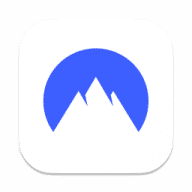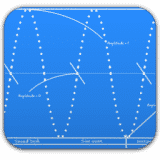SoundDesk overview
SoundDesk, by LoudLAB, can be used by audio professionals to mix on-the-fly, by musicians to record a rehearsal, and anything else that involves mixing or routing digital audio.
Features
- Audio Units - SoundDesk has up to 12 Audio Units inserts on every channel and up to 4 on the master section, so you can use your favourite plug-ins. Furthermore, each channel displays the delay introduced by the plug-ins, and lets the user correct the unwanted time shift.
- Routing - All channels can receive any real input and send to any real output, master section or auxiliary. Making the routing possibilities of SoundDesk only limited by your hardware. Channels can be either mono, stereo or auxiliary receivers, and you can switch between options at any time.
- Mixing - Up to 48x2 input paths (48 stereo channels), 54x2 output paths and 12 Aux sends per channel (pre- or post-fader). >Each channel is equipped with a DC blocker, a noise or wave generator and a delay unit. The user can assign names and colours to individual channels. Goniometers and PPM meters on all channels.
- Master Tools - SoundDesk 3 includes a stereo 3 or 2-Way Linear Phase Crossover, a "Analogue Warmth" option (tube like overdrive and tape like saturation) and a spectrograph at the master channel. The master channel can be recorded in real-time and saved as: AIFF, WAVE, FLAC, CAF, Sound Designer II, NeXT/Sun, MPEG-4, Apple Lossless or AAC files.
- MIDI Control - SoundDesk can communicate with the Mackie Control Protocol, HUI MIDI Mapping Protocol and standard CC devices. The CC mode includes a simple MIDI mapping system designed to ease communications between your devices and SoundDesk.
- Wireless Control Surface - SoundDesk can also be controlled by a device with TouchOSC installed and connected to the same Wi-Fi network. TouchOSC (from hexler.net) is a simple and customisable OSC controller, which means you can customise the layouts (included) and upload them into your device of choice with the TouchOSC Editor.
What’s new in version 4.9.5
Updated on Oct 13 2022
- Bug fixes & improvements
Information
App requirements
- Intel 64
- Apple Silicon
- macOS 10.13.6 or later
Try our new feature and write a detailed review about SoundDesk. All reviews will be posted soon.
(0 Reviews of )
There are no reviews yet
Comments
User Ratings
Aug 16 2021
Version: 4.8.6
All three five star reviews are fake. Zero information about the actual company on their website. Avoid this cash-grab.
May 11 2021
Version: 4.8.2
Great app! It has all the features I need at a good price.
Jul 20 2020
Version: 4.7.2
Fantastic Virtual mixer and AU host for my plug-ins.
Similar apps
Traktor
DJ audio mixer.
Is this app is similar to Traktor? Vote to improve the quality of this list.
Vote results
1
Upvotes
1
Total score
0
Downvotes
DJ Mixer Express
Affordable DJ mixing.
Is this app is similar to DJ Mixer Express? Vote to improve the quality of this list.
Vote results
1
Upvotes
1
Total score
0
Downvotes
Easy Audio Mixer
Audio editor tool.
Is this app is similar to Easy Audio Mixer? Vote to improve the quality of this list.
Vote results
1
Upvotes
1
Total score
0
Downvotes
New and Recently Updated

























